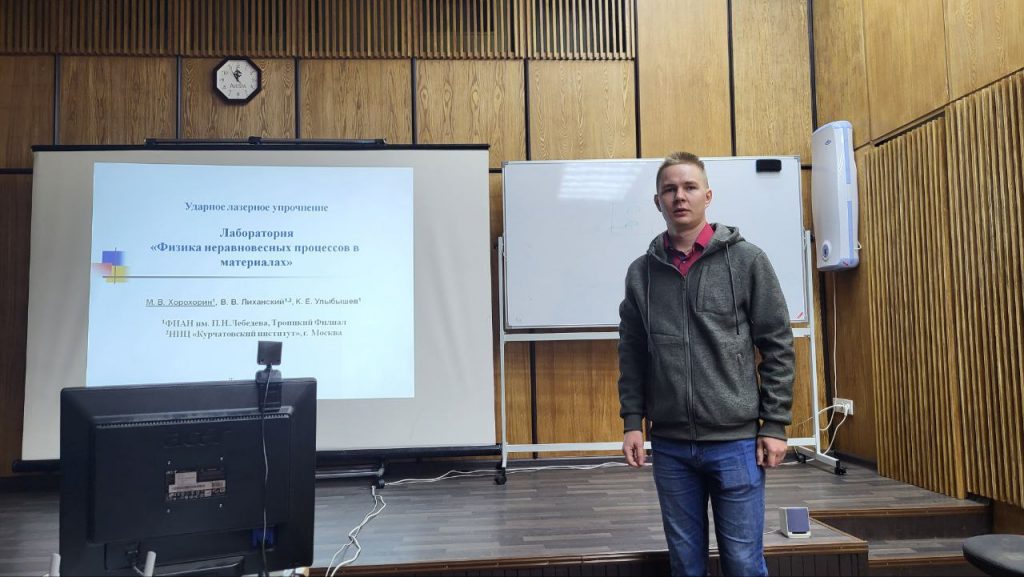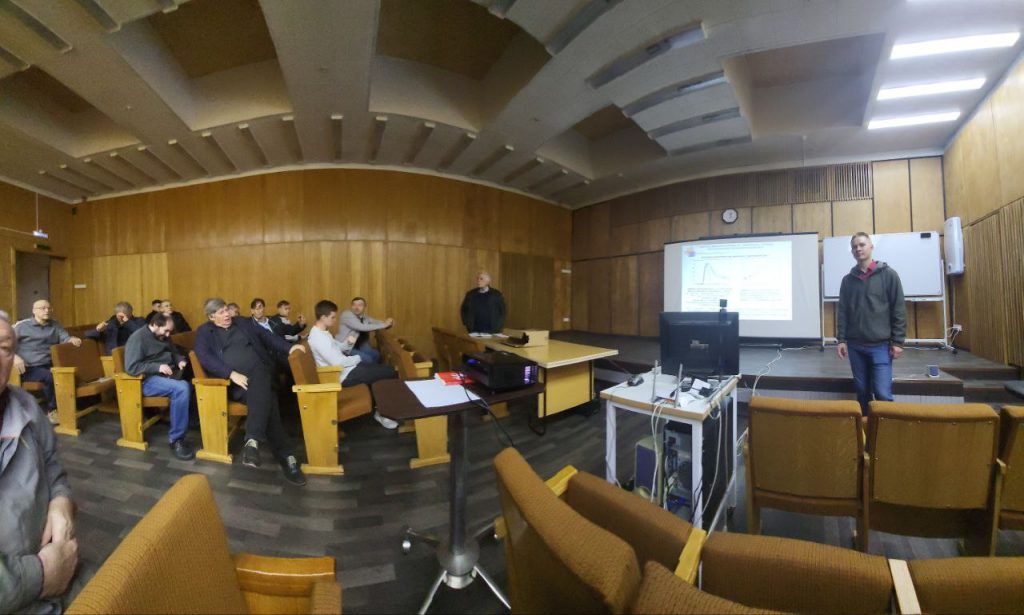Speaker: Maxim V. Khorohorin
Topic: Developing of laser shock peening models
Abstract: The purpose of this research is to provide a detailed description of the processes that occur when materials are exposed to high-energy single laser pulses, which result in changes to their physical properties.
Through experimentation, it has been established that the combined effects of pulsed impact and thermal energy can significantly alter the thermophysical and mechanical properties of materials, as well as improve their resistance to corrosion. The development of computational and theoretical models will contribute to the determination of optimal pulse impact conditions, leading to improved operational characteristics and enhanced safety in the use of these materials. One notable aspect of these models is their ability to account for the short duration of the pulse impact on the material, typically ranging from 1-20 ns, which necessitates the solution of nonstationary problems.
The impact of the effects of laser radiation on materials has been examined in three distinct stages. First, the material undergoes vaporization and plasma generation within its vapor. Next, shock waves propagate through the material due to the increased pressure resulting from the breakdown of the laser-generated plasma upon absorption. Lastly, these shock waves induce changes in the microstructural characteristics of the material, subsequently altering its physical properties.
Key physical changes include the augmentation of residual stress within the material’s surface layer, improvements in strength, hardness, corrosion resistance, and fatigue strength of the specimen. These enhancements can be attributed to the increased density of dislocations following the impulse impact. The model incorporates the generation of point defects within the material caused by the shock wave, which subsequently combine to form dislocations. This model offers a description of the kinetics of point defects specifically under short-pulse impact conditions, in contrast to classical thermodynamical-equilibrium approaches.
The computational tools developed based on the plasma generation model have been validated through analysis of published experimental results. The propagation of shock waves through materials has been simulated numerically using the finite element method, utilizing both elastic and viscous approximations. By incorporating viscosity as a parameter, it becomes possible to account for additional energy losses experienced by the shock wave during propagation. These losses encompass phenomena such as reflection (scattering) of sound waves at grain boundaries and the generation of defects within the material. A comparison between the calculations of changes in dislocation density and published experimental data has been conducted. The modeling results effectively explain the observed microstructural changes and align with the proposed theoretical approach.

